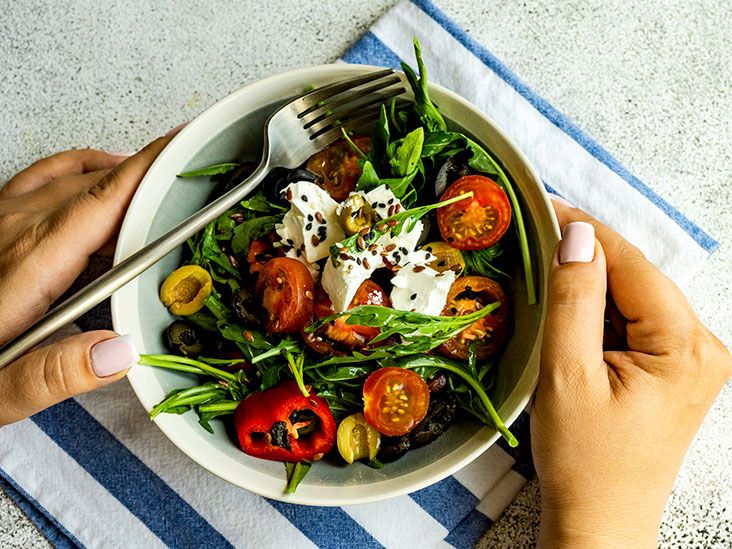12 Healthy Ways to Lower Your Blood Sugar
:max_bytes(150000):strip_icc()/Screen-Shot-2020-12-21-at-12.06.25-PM-2de938a39b49477ab53343d2ee892ccf.png)
Whether you have diabetes or prediabetes—or just generally suffer ill effects from blood sugar swings—you want to know what really works to control your blood sugar levels. It can make all the difference in living well and staying off the blood sugar roller coaster that can drag down your mood and energy and skew your hunger levels. Here are a dozen tips that will help your blood sugar and your overall health. (If you have diabetes, remember you should always work with your health care team first to help control your blood sugar.)
Read More: Best Foods for Diabetes
1. Walk It Out
Walking is a great way to lower your blood sugar levels and keep them stable. Take the stairs, run errands on foot (if possible), keep that promise to your dog to take them on a walk, and go for that weekend bike ride. Even taking a few minutes break to walk each day can add up. Aim for 150 minutes of moderate-intensity exercise per week.
2. Eat More Barley
In your effort to eat more quinoa, you might have forgotten about an oldie-but-goodie carb: barley. This whole grain is packed with fiber that tamps down your appetite and can help decrease blood sugar, according to a 2019 study published in the journal Nutrients. Why? Your gut bacteria interact with barley, which may, in turn, help your body metabolize glucose (sugar). Besides, 1 cup of cooked barley, per the USDA, contains 6 grams of fiber, which helps to mute blood sugar spikes. Don’t be afraid to toss it in soups, on a roasted veggie salad, or have it as a side with fish or chicken.
3. Bump Up Your Exercise Intensity
Exercise is a great way to boost your body’s ability to manage blood sugar, but making sure it’s a heart-pumping workout will help even more.
Performing high-intensity interval training (HIIT)—like sprinting on the treadmill for 30 seconds, then walking or slowly jogging until you recover—improved blood glucose levels, particularly in people with impaired glucose, per a 2022 review in Diabetes Research and Clinical Practice. Muscles soak up glucose during exercise to burn for energy, and the higher-intensity movements may aid this process even more.
4. Combine Your Macronutrients
Carbs plus protein or fat is a super combo when it comes to controlling blood sugar. The protein or fat you eat slows down digestion, thus buffering a blood sugar spike. “For some people, a sharp rise in blood glucose after eating carbohydrates alone could be followed by a drop in blood glucose, which may cause them to feel hungry,” explains says Judith Wylie-Rosett, Ed.D., RD, professor of health promotion and nutrition research at Albert Einstein College of Medicine. (That’s especially true if you have type 1 diabetes.) That’s the exact opposite of what you want to happen after you’ve eaten a meal. Next time you grab some fruit (carb), pair it with a hard-boiled egg (protein). Or try beans (carb) with chicken (protein) and/or a slice of avocado (fat).
5. Go for Whole Fruit over Juice
A glass of orange juice is not the same as eating a whole orange. “People generally drink more juice and therefore consume more calories and sugar than they would by just eating fruit,” says Wylie-Rosett. Plus, you get more fiber from the whole fruit. For instance, there are about 4 grams in a large orange, compared to less than 1 gram in 8 ounces of juice. A small amount of juice is OK, but it shouldn’t be your go-to beverage, she says. When you do drink it, make sure you’re serving it up in an actual juice glass (which might hold 4 ounces, for example) rather than a large cup.
6. Walk After Meals
Dinner is done, but the dishes can wait: it’s time to go for a stroll. A 2018 study published in Medical Science Monitor showed that participants with type 2 diabetes who walked for 20 minutes after dinner at a slow-moderate pace signficantly reduced their blood sugar levels. The walk-it-off strategy is especially helpful after eating carb-heavy meals, particularly dinner, other research has found. Staying active improves insulin sensitivity and helps your cells remove glucose from your bloodstream. Get those walking shoes ready, it’s only 10 minutes. If the weather isn’t cooperating, walk in place in front of the TV or stay active indoors by streaming a workout class.
7. Pick Veggies Wisely
You know vegetables are good for you—but they’re not all equal when it comes to carbs. A half-cup of starchy veggies, like peas, corn or squash, equals 15 grams of carbohydrates, Wylie-Rosett points out. But nonstarchy veggies contain about half that, so you can eat much more of them while making less of an impact on blood sugar. Everything in moderation is fine, but make your most-of-the-time choices the nonstarchy variety, like lettuce, cauliflower, spinach, kale and Brussels sprouts.
8. Get Enough Vitamin D
Here’s another reason to ask your doctor to check your vitamin D levels: it could help you decrease your risk of diabetes. If you are deficient, supplementing with vitamin D and calcium can help stabilize blood sugar levels. Scientists think the sunshine vitamin might impact insulin resistance. Your doctor can tell you if you need a supplement or not; in the meantime, make sure you fill your diet with D-rich foods like sardines, wild or UV-exposed mushrooms, fortified milk and non-dairy milk.
9. Drink More Water
Yes, sipping water can affect your blood sugar. But the important point is avoiding dehydration, says Wylie-Rosett. When you’re dehydrated, sugars in your blood are more concentrated, and thus, your blood glucose levels are higher. But you don’t need to glug a ton. You should generally drink water when you’re thirsty—whether you have blood sugar problems or not, says Wylie-Rosett.
10. Snack on Nuts
They’re one super-portable food that you can pop in your mouth without worrying that they’re doing something funky to your blood sugar levels. When eaten alone or with meals, nuts can help keep blood sugar levels steady because they’re packed with healthy fats and few carbs. For instance, an ounce of almonds contains 164 calories and only 6 grams of carbs, per the USDA. Aim for five 1-ounce servings a week of nuts like pistachios, almonds and cashews.
Pictured Recipe: Pizza Pistachios
11. Eat More Mindfully
Ditch eating lunch in front of your computer or having dinner while watching TV at night, and make it a goal to eat more mindfully. This practice means that you pay attention to hunger and fullness cues, stay present when you’re eating and assess the emotional component of food. Bonus: Mindful eating can also help you deal with food cravings and prevent binge eating, two things that can spur weight gain.
12. Think Long Term for Your Health
“There isn’t a magic diet for people with diabetes,” says Wylie-Rosett. “It’s about how your diet relates to metabolic factors like blood sugar levels, blood pressure and cholesterol,” she says. To suss out exactly what you need, many insurance plans cover medical nutrition therapy, which pairs you up with a registered dietitian to create the best plan for your unique needs. And remember, maintaining a healthy weight, eating a nutritious diet and staying active all go a long way in keeping your blood sugar under control.
link







